“Four score and seven years ago our fathers brought forth, on this continent, a new nation, conceived in liberty, and dedicated to the proposition that all men are created equal…”
–President Abraham Lincoln, Gettysburg Address, November 19, 1863
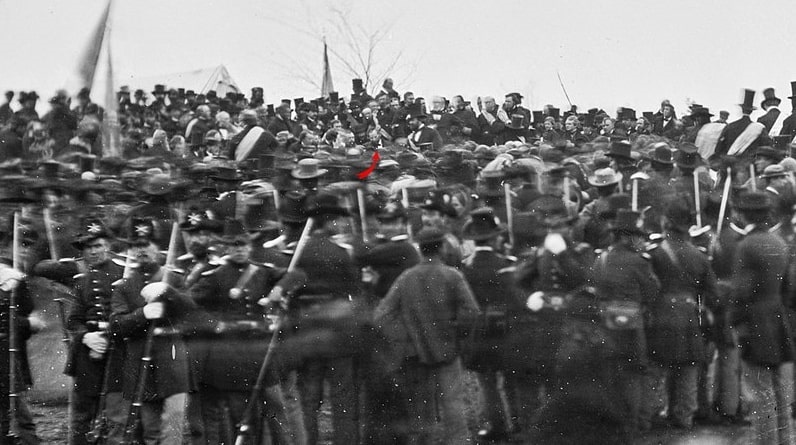
Many of us remember learning and memorizing the opening lines of the Gettysburg Address in school. The legendary address, delivered from the 16th President of the United States, Abraham Lincoln, is one of the defining speeches in American history. These words, revered today, were delivered at a time of deep mourning by President Lincoln.
The Battle of Gettysburg had occurred four months earlier in Pennsylvania, when tens of thousands of men died after three days of bitter fighting. If you’re investigating your family history throughout the Civil War, you’ll likely find yourself researching Gettysburg at some point.
Let’s explore what happened in the Battle of Gettysburg and how to find out if one of your ancestors fought there.
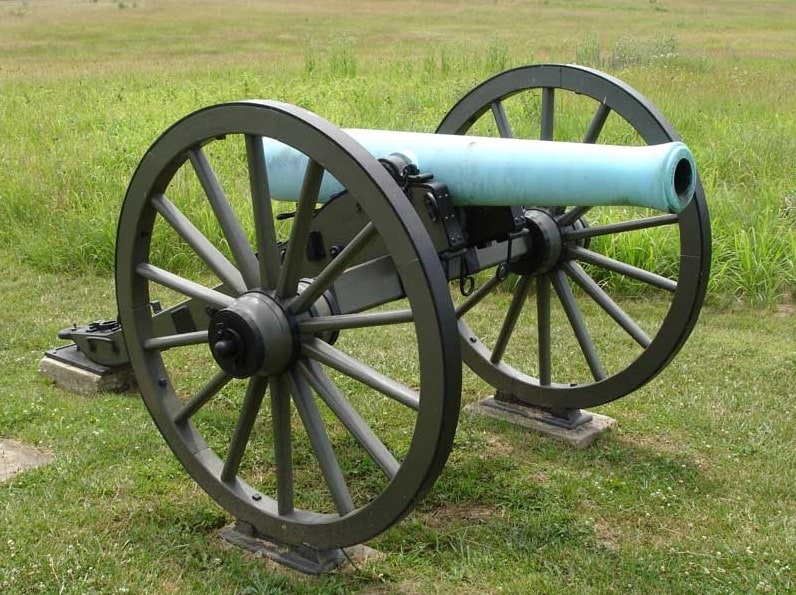
What Was the Battle of Gettysburg?
Gettysburg is considered by many to have been the turning point in the American Civil War. The battle occurred from July 1 to July 3, 1863. During the first two years of the war, starting from April 12, 1861, Union forces had had mixed success, prevailing more often in the western theater of the war than in the east.
But 1863 was a defining year in the Civil War. The victory of the Union at Gettysburg turned the tide of the war and remains one of the most studied battles in military institutions worldwide today.
Where Was the Battle of Gettysburg?
The battle history of Gettysburg in the Civil War begins in and around the town of Gettysburg in Pennsylvania. Led by General Robert E. Lee of the Confederate States of America, the seemingly invincible Virginian looked to carry the fighting out of his home state and northward into the Union itself.
What Was the Significance of the Battle of Gettysburg?
While estimates of the number of Battle of Gettysburg casualties vary, what is known is that 166,000 Americans from both sides fought, and over 50,000 would be dead, wounded or missing by the end of the battle, making it the bloodiest engagement of the four years of war.
The Confederate defeat turned back the South, and, despite the Confederacy continuing the struggle for nearly two more years, this battle essentially cemented the Union’s path to victory.
The Battle of Gettysburg is a constant theme in documentaries, the American education system, and military academies across the nation. Countless artworks, books, and studies have been made on the battle – but why was the Battle of Gettysburg important?
Firstly, this was the Confederacy’s final full-scale invasion of the North. Washington, D.C., was just 100 miles from the Confederate capital of Richmond, Virginia, making the Union capital exceptionally vulnerable. Undoubtedly, the fall of Washington would have led to the downfall of President Lincoln and the U.S. government.
Gettysburg was the northern extent of the Confederate advance, and the South would never match that advance again.
Psychologically, it also demonstrated that General Robert E. Lee could be defeated. His sense of invincibility was developed from some of the most crushing Union defeats of the war. Riding high after defeating General Joseph Hooker at Chancellorsville, Virginia, Lee desired to win a decisive victory north of the Mason-Dixon Line.
Finally, the battle thwarted Lee’s desire to receive recognition and possible intervention from European powers, mainly the British, for the Confederacy.
Lee hoped a devastating defeat so far into Union territory would stoke the fires of Northern defeatism further and induce the Union to seek peace and recognize the South as an independent nation.
However, the Confederate defeat destroyed Lee’s invincibility and the South’s morale. It also convinced the North that they could win the conflict.
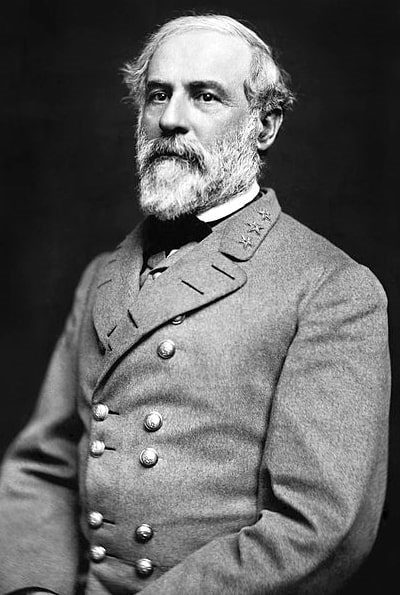
Why the Defeat at Gettysburg Was So Crippling to the South
Many people may question why what happened in the Battle of Gettysburg was such a game-changer in the context of the Civil War. After all, the South had inflicted many defeats on the North in the first two years of the war, totaling tens of thousands of Union dead.
So, if the North could recover from these setbacks, why couldn’t the South?
Firstly, sheer numbers. The South’s population totaled nine million people, including four million enslaved people.
In contrast, the North had a population of 22 million. In other words, the South always fought at a distinct 4-1 population disadvantage.
Another problem the Confederacy had was the lack of industrial power. Nearly all the major industrial centers of the U.S. when the war broke out were located in the North. The South quickly ran out of money and resources.
Finally, the only hope the Confederacy really had was a swift victory, since it was outmatched in men and equipment. This quick victory never came, and the Confederate States’ politicians severely underestimated the North’s will to fight.
Gettysburg cost the South irreplaceable men, horses, equipment, and morale, whereas the North’s superior numbers and industrial output could replace what it lost in the battle.
What Happened in the Battle of Gettysburg?
As mentioned above, the Battle of Gettysburg came after Lee’s victory over General Hooker at Chancellorsville, Virginia, in May 1863. With his army’s swelling morale, Lee felt the time had come to deal a final blow to the Union.
Lee split his army into three corps. However, during the last week of June 1863, General Jeb Stuart, leading the South’s cavalry corps, performed a sweep around Federal forces and left the main Southern army behind. His maneuver left Lee’s Army of Northern Virginia marching into Pennsylvania without being in touch with its cavalry. Losing the eyes of his army weakened Lee’s intelligence about the location and movement of the Northern army.
In terms of Battle of Gettysburg generals, General George G. Meade has become an icon. He replaced Hooker as the commander of the Union Army of the Potomac after Chancellorsville. He maneuvered his army to march and shadow Lee north to protect Washington, D.C.
At the end of June, General John Buford of the Army of the Potomac’s cavalry drove back a small Confederate brigade from Lee’s army close to Gettysburg. The North advanced into a nearly deserted Gettysburg, setting the stage for a titanic clash.
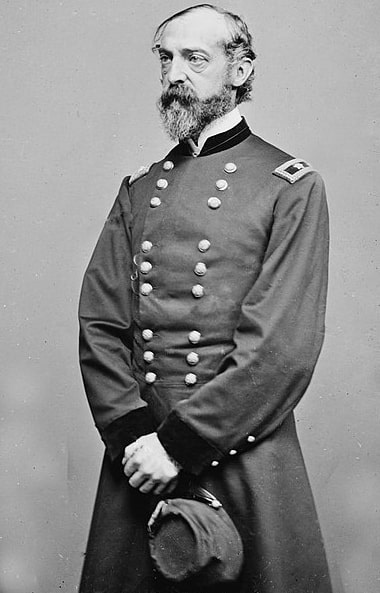
The Battle
Gettysburg was never supposed to be the setting for one of the Civil War’s most pivotal battles. Strictly speaking, the town was small and largely unimportant compared to the large industrial centers of Pittsburgh and Philadelphia.
However, the maneuvers of both armies led Lee and Meade to meet there. Let’s go through the battle over its three days to discover what happened.
July 1
The first day of the battle began with Major General Henry Heth of the Confederate Army marching toward the town to seize supplies. An unplanned engagement occurred as they clashed with a portion of the Union cavalry under Brigadier General John Buford.
The Confederate advance slowed but never halted until the I and XI Corps of Major General John F. Reynolds arrived to reinforce the Union. In the ensuing fighting, Reynolds was killed. For the South, Generals Richard Ewell and A. P. Hill bolstered the Confederate forces.
By the late afternoon of the first day, more than 30,000 Confederates sent 20,000 Union troops into a headlong retreat toward the town. The Union fortified Cemetery Hill just to the south of Gettysburg.
July 2
The Union army prepared its defenses along a set of ridges and hills in a fishhook shape to the south of the town. During the morning, the Confederates moved into position to confront the Union position in a long line.
In the afternoon, General Lee launched an attack against the Union’s left flank. Heavy fighting began around the Peach Orchard, Wheat Field, Devil’s Den, Little Round Top, and Cemetery Ridge. Union forces under Major General Winfield S. Hancock’s II Corps moved reinforcements into place to stop Confederate advances and force the South back.
Ground was given to Lee’s army at both ends of the line, but the Union managed to hold its most vital positions as the day drew to a close.
July 3
Lee was in high spirits on the third day of the battle, believing the two previous days of fighting had weakened the enemy, and that it was only a matter of time before they were defeated.
The day began with more attacks on the Union line, with especially bitter fighting occurring at Culp’s Hill as the Union attempted to counterattack. Across the east and south, the cavalry of both armies engaged.
Despite this, the primary engagement of the day was the infantry assault against Cemetery Ridge, the central Union position. Approximately 12,500 infantrymen from the Confederate army advanced across a mile of open farmland with no protection.
The most famous part of the charge was under Brigadier General George E. Pickett, who made up half of the attacking force. Known as Pickett’s Charge, one Confederate brigade managed to reach the top of the ridge where the Union army was dug in. Today, this is known as the High Water Mark of the Confederacy.
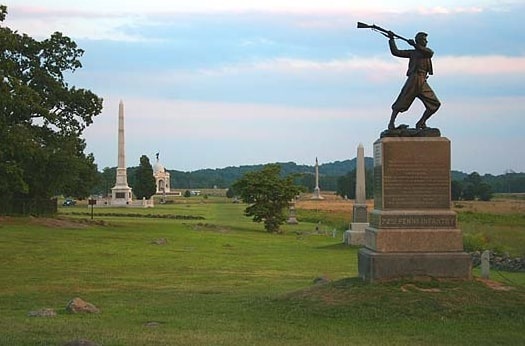
Pickett’s Charge ultimately failed, leading to a casualty rate of nearly 60%.
The South was forced to retreat. The next day, Lee admitted defeat and began his army’s return to Virginia.
Casualties
So, what were the casualty totals at the Battle of Gettysburg?
Like all battles from the era, only estimates can be provided due to poor recordkeeping. Numbers of casualties have ranged from 45,000 to 51,000 killed, wounded or missing from both sides, but most historians agree it was over 50,000.
According to the latest battlefield estimates, the Union army had 23,000 casualties, and the Confederates had 28,000. While these numbers may seem close, the South felt the loss more deeply, as the 28,000 men constituted over a third of Lee’s Army of Northern Virginia.
Aftermath
It might surprise you that, at the time, Gettysburg wasn’t considered a turning point in the war. The North rejoiced over their victory, but they didn’t yet know the extent of the damage they’d inflicted on the South. The victory led them to take the initiative in the war, but the Battle of Gettysburg was seen as just another engagement in a broader conflict.
Lee was so devastated by the defeat that he offered his resignation to Confederate President Jefferson Davis. The resignation was rejected, and Lee fought until finally surrendering on April 9, 1865.
Gettysburg drained the South of manpower and resources while galvanizing the North to conduct a full-scale invasion of the South in the remaining years of the war.
In conjunction with future president Ulysses S. Grant’s victory at Vicksburg on July 4, 1863 – gaining control of the Mississippi River for the North – the Battle of Gettysburg was the beginning of the end for the South.
Lee’s retreat has also become a matter of some historical study. The cautious Meade failed to pursue Lee’s army. Most historians and military experts believe that if Meade had followed Lee, he would have trapped the defeated general and forced him to surrender, ending the war two years sooner than it finally did end.
Did the South Have Another Opportunity to Win the War after Gettysburg?
In short, no. Lee never launched another tactical offensive for the rest of the war, merely reacting to Grant’s movements.
Some have argued that if the South had held cities like Atlanta until after the 1864 election, George McClellan would have won the presidency and unseated Lincoln. By the autumn of 1864, the Northern public was growing tired of the war and was becoming increasingly frustrated. Democrats had a rising peace faction that wanted to end the war through a negotiated settlement. Lincoln, of course, won re-election for a second term.
In hindsight, the collapse of the South after the Battle of Gettysburg and the loss of Vicksburg was inevitable. After Lincoln’s re-election, only the most diehard Confederates saw any way back for the South; thus, the peace politicians in Washington, D.C., had little influence.
In short, there’s a reason why Gettysburg is known as the turning point in the war. Even though the Civil War continued for two more bloody years, the South’s fate was sealed by the devastation of the Army of Northern Virginia in Pennsylvania.
How to Find Information on Soldiers in the Battle of Gettysburg
Many people studying their family history invariably ask, “What did my ancestors do in the American Civil War?”
If you know that your ancestors fought in the Union Army of the Potomac or the Confederate Army of Northern Virginia, they were almost certain to have fought at Gettysburg. While you’re doing your research, you’re probably wondering: did your ancestors survive the battle to keep fighting, or were they some of the thousands of soldiers who fell on the battlefield?
Finding the answer to these questions is easier than you might think. Despite poor recordkeeping by the central authorities, there are still many ways to learn about your ancestors.
Look Up Census Records
Before you begin, three pieces of information will help you:
- Your ancestor’s name
- Which side he fought on
- Which state he came from
Many people don’t know where their ancestor was living at the time of the Battle of Gettysburg, but a U.S. Federal Census was conducted in 1860, one year before the start of the war. You can look up this census to confirm where your ancestor was living at that time.
Newspaper Records
Newspapers were the primary method of communication across the country before the age of telephones and the internet. Almost every town had some form of newspaper back then, and there were reporters at the battlefield in Gettysburg.
The Civil War had an impact on every town. It was common for local newspapers to list which of their men had signed up to fight and who was lost. Newspaper records provide context because they offer stories about heroic deeds, commendations, and what was happening with the soldiers’ families.
GenealogyBank’s Historical Newspaper Archives have more than 300 years of U.S. newspapers entirely digitized. With GenealogyBank, you can search through digitized records from the Civil War.
Search the World’s Largest Obituary Collection
Obituaries were all too common in America’s most destructive conflict. Communities came together to mourn their dead and write touching obituaries in their local newspapers.
Obituaries can tell you much about a person’s character, and provide leads to other family members for further research.
At GenealogyBank, we boast the world’s most extensive obituary collection. If you discover that you have an ancestor who died in the war, the chances are an obituary was written in their hometown. Note that obituaries may not have been published until months after they died.
In the cases of many soldiers, their bodies were only discovered later on and identified. Some were never identified, meaning it could take many months before they were declared dead.
Some states also suffered more than others due to their populations, location, and the makeup of the armies from each side.
The states with the highest number of Civil War deaths included:
- New York: 39,000 deaths
- Illinois: 31,000 deaths
- North Carolina: 31,000 deaths
- Virginia: 31,000 deaths
If your ancestor came from one of these states and you’re looking for his obituary, use some of our other resources to get as much information as possible about them. The more information you have, the easier it’ll be to sift through the massive number of obituary records from these states.
Discover Interesting Facts about Your Family’s Wartime History with GenealogyBank
The Battle of Gettysburg is seen as the turning point for the Civil War and the beginning of the end of Lee’s once unbeatable army.
GenealogyBank is the number one resource to aid your search for your ancestors. Find out what the men and women in your family did during the American Civil War. Your research can help you connect some of the missing dots in your ancestor’s past and uncover fascinating facts about your family history.
We have the largest database of online newspaper archives and obituaries in the world, covering three centuries of American history, starting with the Thirteen Colonies. To begin your search, sign up for your seven-day free trial today!
Note on the header image: L. Prang & Co. print (1887) of the painting “Hancock at Gettysburg” by Thure de Thulstrup, showing Pickett’s Charge. Restoration by Adam Cuerden. Credit: Library of Congress, Prints and Photographs Division.
Related Articles:
